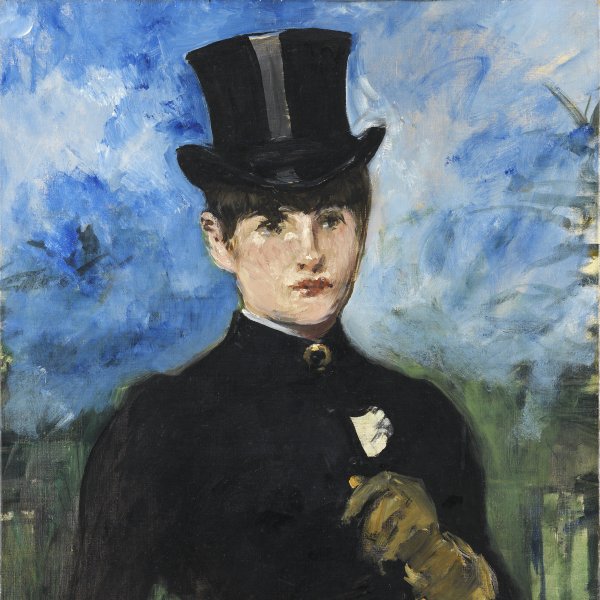Édouard Manet
Paris, 1832-1883
A practitioner of realism, Édouard Manet was a pivotal figure in the renewal of French and Western painting of the late nineteenth century. Although he never belonged to the Impressionist movement, the technique and subject matter of his works became essential references for the generation of young painters who espoused this trend, among them Claude Monet, Paul Cézanne and Camille Pissarro.
The son of a senior civil servant of the Ministry of Justice, Manet decided to take up painting after two failed attempts at being admitted to the Naval School. From 1850 to 1856 he attended the workshop of Thomas Couture, where he coincided with his childhood friend Antonin Proust, who later became Minister of Culture. Guided by his admiration for the Great Masters of painting, he copied the works of the Italian Renaissance painters in the Musée du Louvre and travelled around Belgium, Holland and Germany. His admiration for the work of Diego Velázquez, Bartolomé Esteban Murillo and Francisco de Zurbarán led him to paint themes inspired by Spain, which he visited in 1865.
Manet’s initial Spanish-inspired tenebrist style developed into a more luminous type of painting and he began to focus on urban life for the first time. These themes, no doubt influenced by his friend Charles Baudelaire, and the boldness of his light, brilliant technique caused his works to be rejected systematically by the official salons, while his fame grew among the young Impressionist painters, who tried unsuccessfully to persuade him to join their exhibitions.
Manet’s Luncheon on the Grass (Paris, Musée d’Orsay), included in the first Salon des Refusés of 1863, caused a great stir — as much for the theme as for the technique employed — comparable only to the scandal triggered shortly afterwards by his Olympia (Paris, Musée d’Orsay) at the Salon of 1865. He secured the greatest success of his career with A Bar in the Folies-Bergère (London, Courtauld Institute), which was shown at the Salon of 1882. Towards the end of his life he painted numerous portraits of women in oils and pastels, as well as many still lifes and garden scenes. His technique, which became even more loose and spontaneous, blazed a new trail in modern painting. As Henri Matisse wrote several years after his death, Manet, was “the first painter to have made an immediate translation of his sensations and thus given free rein to the painter’s instinct.”
The son of a senior civil servant of the Ministry of Justice, Manet decided to take up painting after two failed attempts at being admitted to the Naval School. From 1850 to 1856 he attended the workshop of Thomas Couture, where he coincided with his childhood friend Antonin Proust, who later became Minister of Culture. Guided by his admiration for the Great Masters of painting, he copied the works of the Italian Renaissance painters in the Musée du Louvre and travelled around Belgium, Holland and Germany. His admiration for the work of Diego Velázquez, Bartolomé Esteban Murillo and Francisco de Zurbarán led him to paint themes inspired by Spain, which he visited in 1865.
Manet’s initial Spanish-inspired tenebrist style developed into a more luminous type of painting and he began to focus on urban life for the first time. These themes, no doubt influenced by his friend Charles Baudelaire, and the boldness of his light, brilliant technique caused his works to be rejected systematically by the official salons, while his fame grew among the young Impressionist painters, who tried unsuccessfully to persuade him to join their exhibitions.
Manet’s Luncheon on the Grass (Paris, Musée d’Orsay), included in the first Salon des Refusés of 1863, caused a great stir — as much for the theme as for the technique employed — comparable only to the scandal triggered shortly afterwards by his Olympia (Paris, Musée d’Orsay) at the Salon of 1865. He secured the greatest success of his career with A Bar in the Folies-Bergère (London, Courtauld Institute), which was shown at the Salon of 1882. Towards the end of his life he painted numerous portraits of women in oils and pastels, as well as many still lifes and garden scenes. His technique, which became even more loose and spontaneous, blazed a new trail in modern painting. As Henri Matisse wrote several years after his death, Manet, was “the first painter to have made an immediate translation of his sensations and thus given free rein to the painter’s instinct.”





